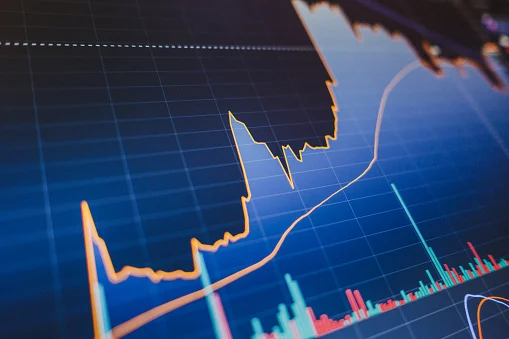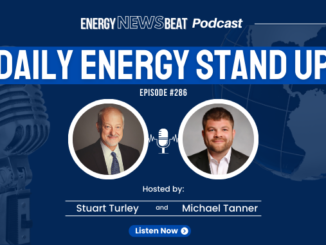
The Biden administration’s requirements for electric vehicle tax credits will reduce the number of models eligible for incentives until tens of billions of new investment in US manufacturing by automakers and suppliers kick in.
The guidance released Friday clarifying provisions of the Inflation Reduction Act — President Joe Biden’s landmark climate bill — will leave few EVs eligible for up to $7,500 credits as of April 18, administration officials said. The reason: most don’t meet new requirements that battery components or critical minerals are sourced from North America or US free trade partners.
The global auto industry eagerly anticipated the US Treasury Department’s notice, with lobbyists pushing for months to loosen up the sourcing and content requirements. While tax credits for consumers included in the legislation, known as the IRA, will be difficult to attain, those incentives and additional perks for manufacturers have helped trigger announcements of more than $52 billion in EV and battery investment in the US.
The Treasury left still unclear how it will deem companies to be foreign entities of concern, which automakers won’t be able to turn to for battery components and critical minerals in the years to come. One of the overarching goals of the IRA is to make the US less reliant on China, which dominates the EV battery supply chain.

The number of vehicles that will qualify for tax breaks will rebound as the supply chain is built out in the coming years, according to a senior Treasury official, who briefed reporters ahead of the release. Just 21 models have been eligible for credits prior to the guidance taking effect.
“This latest turn will further reduce the number of eligible EVs,” John Bozzella, president of trade group Alliance for Automotive Innovation, said in a statement, adding it’s still unclear how many will qualify next month. “This period may go down as the high-water mark for EV tax credit eligibility since the IRA passed last year.”
The Biden administration is looking to revive American industry while tilting the economy away from fossil fuels. The IRA also intersects with a separate national security objective: to free the US and its allies, as much as possible, from dependence on supply chains it sees as vulnerable to China. In addition to batteries, products of concern include semiconductors, pharmaceutical ingredients and green energy components.
The IRA is “creating American manufacturing jobs and strengthening our energy and national security,” Treasury Secretary Janet Yellen said in a statement.

How aggressively Washington pursues its goals has been closely watched by the auto industry, with its complex and long-distance supply chains spanning mines from to battery-cell makers. Legacy manufacturers including Ford and EV market leader Tesla have plans to build new battery plants in the US that may leverage Chinese intellectual property.
The Biden administration gave automakers some wiggle room in its interpretation of the legislation, following an intense lobbying blitz since it was passed in August. While this has eased concerns of some big automakers and trade partners, it’s angered supporters of the bill, particularly Senator Joe Manchin of West Virginia, who was key to getting the IRA passed.
The IRA extends as much as $7,500 in consumer tax breaks for cars that meet criteria on how much they cost, how much their buyers earn and where the vehicles are assembled. The most detailed, and controversial, requirements are focused on the component and minerals within the battery.
Specifically, the rules split the credit in two, with $3,750 available for vehicles with at least half of their battery components from North America, and the remainder if 40% of the value of raw materials in the battery are extracted or processed domestically, or in countries with US free-trade agreements. Those requirements will ramp up over time.

Treasury has been vague on how to define what the law refers to as foreign entities of concern, although the administration officials said it will include Chinese companies. No tax breaks are available for vehicles containing battery components or critical minerals from foreign entities of concern starting in 2024 and 2025, respectively.
Biden’s plan has a hard road ahead for competing with China on batteries, which analysts at UBS Group AG have likened to the the 21st century version of oil.
Chinese battery firms led by Contemporary Amperex Technology Co. Ltd. and BYD Co. accounted for just over 50% of the market last year. By the end of the decade, nine of the 10 biggest battery makers will come from China, BloombergNEF has forecast.
“China’s dominance in the battery supply chain — from critical mineral processing to EV adoption — cannot be understated,” said Andrew Wang at Intercalation, a London-based battery industry research organization. “The implementation of the IRA will need to strike a delicate balance by incentivizing the decoupling of supply-chain reliance, without forcing a decade of lessons in scaling to be relearned.”
News Briefs |
- Tesla pursues US battery plant with China’s CATL.
- Ford takes stake in Indonesia nickel project.
- BP charging firm gives Uber drivers VIP treatment.
Before You Go |

Polestar had a tough and incongruous goal last year: nearly double production of its EVs, while simultaneously reducing emissions generated from crafting of each one. The Sweden-based startup checked the first box a few weeks ago, sharing that it assembled 50,600 Polestar 2 sedans. Today, after months of crunching the numbers, the company announced that it accomplished its green goal, as well, reporting an 8% decline in emissions per vehicle.



